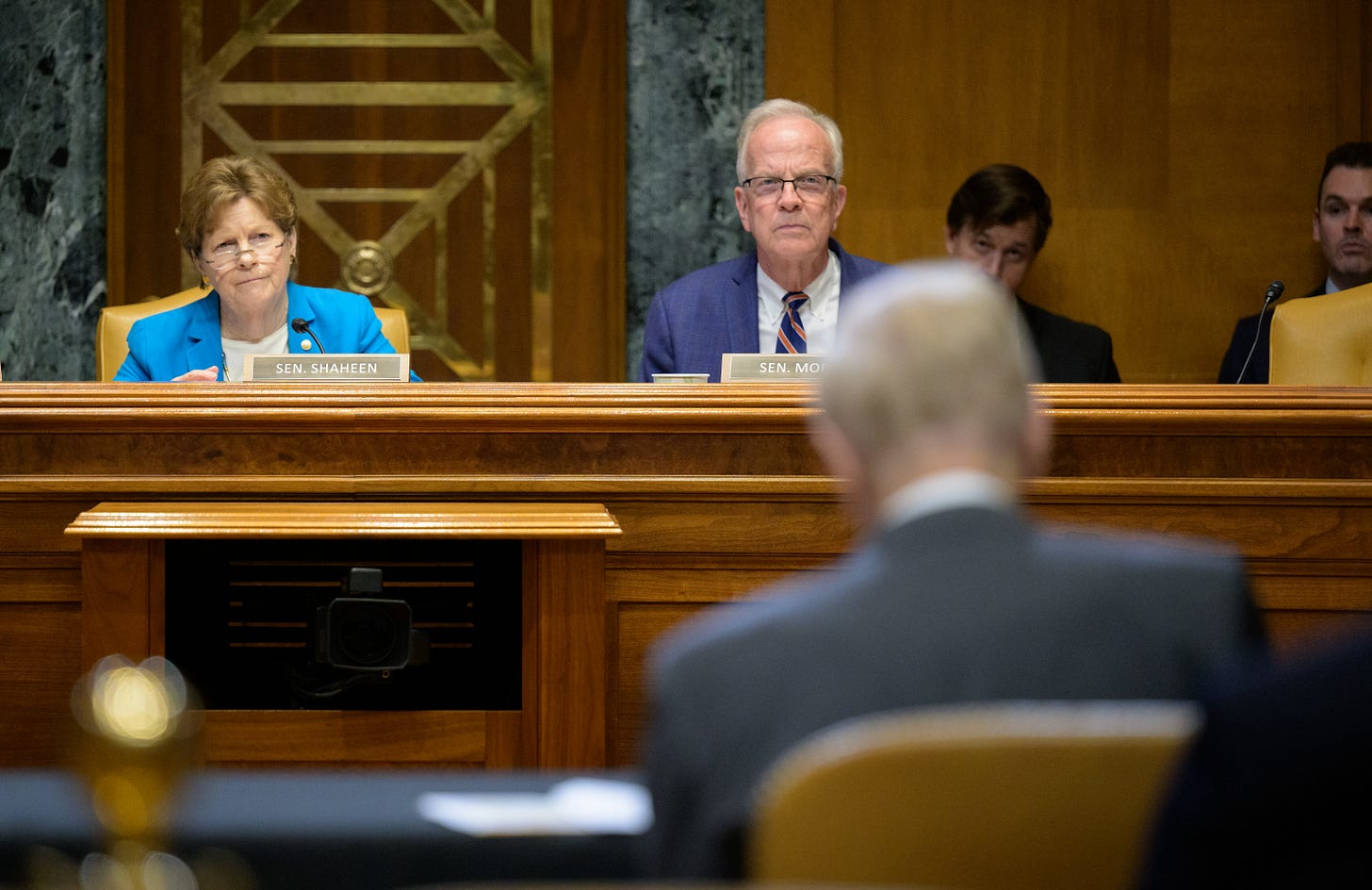Congressional Committees Reject Deep NOAA Cuts Proposed by Trump Administration
Bipartisan appropriations committees in the House and Senate widely reject severe cuts affecting the future of hurricane forecasting

Congressional members from both sides of the aisle repudiated deep cuts to NOAA proposed by the Trump administration and reiterated their support for a fully staffed National Weather Service during important appropriations markups this week.
In a full meeting of the House Appropriations Subcommittee on Commerce, Justice and Science (CJS) on Tuesday, a bipartisan committee of 9 Republicans and 6 Democrats advanced a spending bill that would fund NOAA, the parent agency of the National Weather Service, at levels commensurate with budgets in previous years.
Although the spending bill is still far from becoming law, it’s a major rejection of the 2026 NOAA budget proposed by the Trump administration last month.
In its proposed budget, the Trump administration outlined a 27% reduction to NOAA’s budget for next fiscal year (beginning this October) that would eliminate NOAA’s Office of Oceanic and Atmospheric Research or OAR, which funds dozens of world class weather and climate facilities, including NOAA’s Atlantic Oceanographic and Meteorological Laboratory (AOML) and Hurricane Research Division (HRD) in Miami. AOML and HRD are critical to operational hurricane forecasts and without them, experts estimate hurricane forecast accuracy would tumble by 20 to 40%.
In the spending bill advanced today by the House, NOAA’s budget would be reduced by 6% - from $6.18 billion in 2025 to $5.8 billion in 2026, with almost $1.1 billion added back to NOAA’s Operations, Research, and Facilities (ORF) account from what the administration’s proposal last month.
Of the $1.49 billion reduction proposed by the administration to NOAA’s ORF in 2026, about half ($668 million) came from the elimination of OAR. While we don’t know the exact details of the House spending plan yet, re-funding ORF likely salvages most if not all of OAR, including the critical research labs and climate institutes – and hundreds of their leading scientists – at risk of being cut.
Additionally, the House CJS bill provides significantly more funding for NOAA’s procurement, acquisition, and construction account than what the administration proposed. In its initial proposal, the administration slashed the account by nearly 20% and eliminated funding originally included to procure replacement aircraft for the aging hurricane hunters. This likely gets added back in the House version.
The House CJS bill also provides $55 million to NOAA’s Community Project Funding, an initiative slated for termination in the administration’s proposed 2026 budget.
Bipartisan support for National Weather Service staffing
In the Senate Commerce, Justice and Science appropriations markup held last Thursday, the bipartisan subcommittee was unable to move its version of the spending bill forward after a contentious last-minute amendment passed by Senate Democrats during the markup. The amendment was unrelated to NOAA or the Department of Commerce, but it effectively torpedoed the bill’s advancement, and the bill is held up in what Senator Susan Collins, chair of the Senate Appropriations Committee, described as a “long recess.”
Nevertheless, Senators from both sides indicated a favorable spending bill for NOAA and the National Weather Service during their opening statements and related amendments.
Senator Jerry Moran (R-KS), chair of the CJS appropriations subcommittee, reiterated his support for the agency. “NOAA, and in particular the National Weather Service, is a hugely important component of what this bill funds and this bill recognizes that importance,” he said during his opening remarks. Senator Moran also introduced language in the spending bill to ensure full staffing levels at the National Weather Service moving forward in response to recent DOGE-directed staffing reductions.
“Our entire economy hinges on the accurate forecasting of the National Weather Service,” said Senator Patty Murray (D-WA), vice chair of the Senate Appropriations Committee, “so I really believe this is not a time to cut staff drastically without any rhyme or reason. I think us protecting the staffing levels of this critical agency is urgent.”
During the lengthy markup, Senator Brian Schatz (D-HI) introduced an amendment that he argued strengthened the requirement to fully staff NWS by requiring staffing levels to not fall below the number of employees NWS had at the end of last fiscal year (approximately 4300 employees as of September 30, 2024). The amendment to lock in last year’s NWS headcount, however, was rejected by the Republican majority in favor of the broader language included in the bill’s so-called manager’s package.
The Senate version of the spending bill includes $10 million of additional funding for the National Weather Service, or a roughly 1% increase, for fiscal year 2026.




Thank God. I hope this sticks!!! Thanks for helping fight the good fight on this one !!!
Christ—finally some sanity!